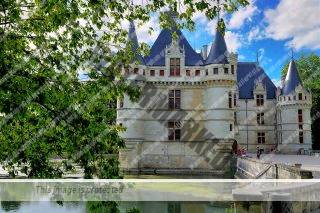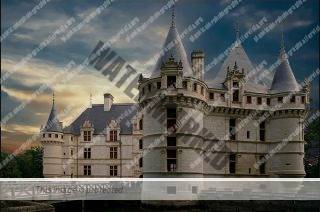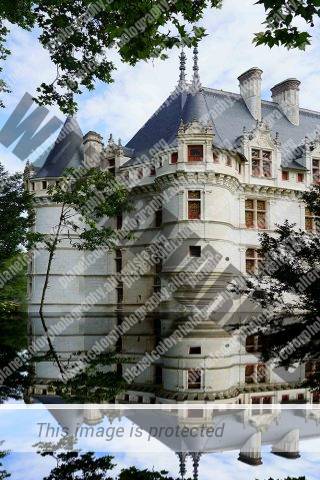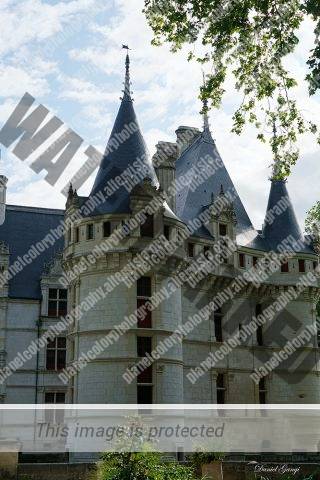The medieval castle of Chaumont, direct view of the Loire.
The wonderful territory of the Loire hides inside dozens of wonderful castles, all beautiful but each one substantially different in architectural details.
Italian version 🇮🇹 Here
The Château de Chaumont built right next to the Loire, with its splendid view, manages to stand out from all the other castles.
Initially known by the name of Chauve Mont, it later took the name of Chaud Mont and with its 40 meters high, the castle of Chaumont, it is also the highest castle in the region.
A bit of history
The castle of Chaumont, whose French name is Châteu de Chaumont, is the result of numerous renovations that have been carried out over the years by the various owners. Its first construction dates back to the year 1000 by the will of the Count of Blois, to protect the border between the counties of Blois and Anjou. In 1039 it passed to the Amboise family, who maintained its possession for five centuries. Around 1465, Pierre d’Amboise’s rebellion against King Louis XI was punished by the royal who ordered the destruction of the castle. Despite this, Pierre d’Amboise managed to regain the benevolence of the king and together with his son Charles they began the reconstruction of the castle. Later, under the reign of Louis XII, the family became more powerful and resumed the construction of the castle. The chapel, the east and south wings, and the tower of San Nicola were built. About a century later, Caterina de Medici purchased the property but upon the death of her husband Henry II, Catherine forced Diana of Poitiers, her husband’s lover, to accept the castle of Chaumont in exchange for the more coveted Chenonceau castle. In the 18th century, the estate passed to Jacques Donatien Le Ray who demolished the north wing and opened the internal courtyard towards the Loire Valley, creating a large terrace with a splendid panoramic view of the Loire. Le Ray, also the two ceramic and glass factories built in the current stables and directed by the famous Italian sculptor Jean Baptiste Nini. Inside you can admire a beautiful collection of medallions made by this famous sculptor. In 1875 Marie Say acquired the castle. Daughter of a wealthy merchant, she married the son of the Duke of Broglie and soon the couple decided to undertake a complete restoration of the castle. During this period, the castle became a place of sumptuous parties and receptions. Marie Say received the Indian Maharajas of Baroda, Patiala and Kapurthala in Chaumont. The latter gave an elephant to Mrs. Say, whom she called Miss Pundgi. Thanks to her great wealth, Marie Say indulged in all kinds of whims and fantasies. I will inspire Marcel Proust for his book “In search of lost time”, and to entertain his guests I also arrive to bring the Paris Opera orchestra to the Château de Chaumont. In love with tango and her teacher, in the early nineteenth century, Marie Say began a life of scandals. At 73 years old widow, in 1930 he remarried with his teacher Luis Felipe de Orleans of only 42 years old. The second marriage led to the complete waste of the family’s fortune, and Marie Say had to sell the castle of Chaumont to the French state. A few years later, in 1943, the princess died at the age of 86, almost in ruins. Since it was purchased by the state, the castle, together with the gardens, form the Domaine de Chaumont-sur-Loire, property of the Center-Val de Loire region, in charge of its administration and maintenance.
Chaumont Castle
Chaumont Castle features architectural elements from the late Gothic period. Proof of this is the beautiful drawbridge, the battlements and the dry moat. The renovations and the various property passages that have followed over the centuries have given this castle a truly unique style. Walking inside it you can still see evident details of its history. On the columns at the entrance, the two letters “C” intersected between them symbol of the owners Catherine and her husband Carlos II d’Amboise. Instead, observing the reliefs of the royal shield we will notice the initials of King Louis XII and his bride Anna of Brittany. In the beautiful windows that adorn the facades there is instead the coat of arms of Caterina de Medici. The sumptuous Renaissance aspect is attributable to Marie Say and the architect Paul-Ernest Sanson.

The gardens
The castle gardens are the result of the passion for botany that fascinated Marie Say. Started in 1884 at the hands of the landscape architect Henri Duchêne, the dimensions gradually increased thanks to the purchase of the adjacent land, with the intention of creating a large agricultural estate which, however, was never completed. It also financed the construction of large tropical greenhouses where orchids that Marie Say liked a lot were grown. Between 1875 and 1917, the domain of the castle of Chaumont reached an extension of 2,500 hectares. But currently the property has around 32 hectares. Today the gardens serve as an exhibition venue, and are adorned with many sculptures scattered throughout the property. Every year between March and November they host the famous International Garden Festival of Chaumont-sur-Loire, a worldwide event in terms of landscape architecture, gardening and garden design.
The Castle and the Centro de Arte e Natura are open all year round from 10:00 am, except January 1st and December 25th.
The International Garden Festival and the Goualoup Meadows are open every day from 23/04 to 01/11/2020.
A special thanks goes to Alberto Daniel Gangi who kindly made his photos available for the realization of this article.
Photographer: Alberto Daniel Gangi

Remember to share this article with your friends on social media.
If you want to stay updated on everything that happens on planetcolorphotography.altervista.org
Join the facebook group Planet Color Photography.



